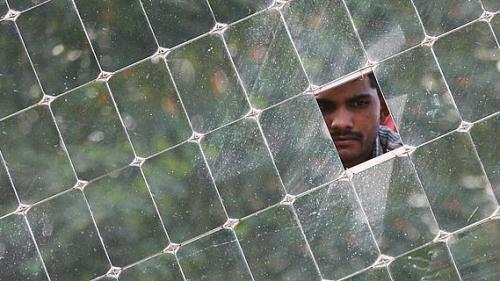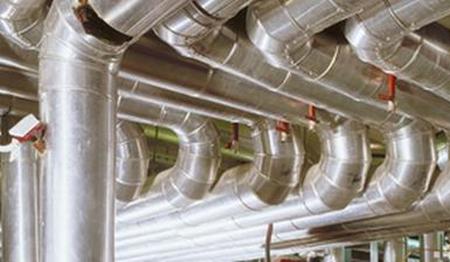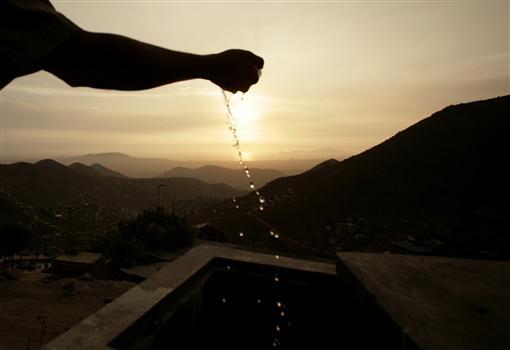 | « Back to article | Print this article |
Invest to make homes eco-friendly, reap rich rewards
Sealine Co-operative Housing Society in Union Park, an upmarket residential colony in Khar, Mumbai, generates about 4 kw (kilowatt) electricity per day, using solar panels and one windmill.
This electricity is sufficient for operating 40-50 lights in the building's common areas such as passageways and stairs, day and night. The water in the tank that is heated using the solar heater is supplied to all the flats. So, none of the flats in the building use water heaters.
The society has 11 families, with 30-40 residents. The cost of setting up the solar and wind equipment together worked out to about Rs 110,000 per family, spread over a period of seven years.
The solar panels and water heaters together cost about Rs 800,000 and were installed over a period of five to six years. The windmill, installed last year, cost Rs 800,000.
The biggest battle was convincing the residents about the need to set up the solar panels. That alone took six months, says Navin Chandra, general secretary of the society.
He said: "Right now, the cost of solar energy is 2.5 times more expensive than conventional electricity. But the cost is coming down. In another three to four years, there would be very little difference between the two, as the price for generating and supplying conventional energy is rising."
Click NEXT to read more...
Invest to make homes eco-friendly, reap rich rewards
The equipment requires no maintenance. The only expense is the equipment cost. It is possible to recover this in five to six years, as the energy generated is free.
The only maintenance required is cleaning of the solar panels once in about two to three weeks and checking the batteries for water. Today, there are batteries that don't even require water.
As the price of solar equipment has been coming down over the years, the same equipment would be available at lesser cost now. Besides, earlier most of the equipment had to be imported. Today, more Indian companies are manufacturing solar panels.
"During the nine months of summer, we only need five hours of sunlight to produce electricity to last through the day. It can be stored in the battery for use at night," Chandra said.
In addition to reducing its electricity charges, Sealine has also cut on its water bills by installing a rainwater harvesting system.
From a situation five to six years, when it used to call for two to three water tankers every week, today Sealine has surplus water. Even last year, when most of Mumbai was facing a water supply cut due to poor monsoon, Sealine had surplus water.
Click NEXT to read more...
Invest to make homes eco-friendly, reap rich rewards
Installing a rainwater harvesting system is not very complicated. What is required are pipes to collect rainwater, a filter for treating the water, a tank to collect the water and a bore well to draw out the water. The cost of setting up a rainwater harvesting system for a building with 10-15 flats works out to about Rs 500,000.
Until Sealine invested in the system, the building used to face flooding in its basement during the monsoon. Now, the same hazard has become an asset, says Chandra.
"Our area is low-lying. About six years back, before we started rainwater harvesting, we used to pump out the water that used to flood our basement using six pumps. Now, we use the water for our garden, cleaning cars and in our toilets. So, we save 40 per cent of drinking water that BMC supplies," he explained.
Although the municipal corporation in Mumbai has made it mandatory for all new buildings that have come up since 2011 to have rainwater harvesting, it is not being strictly enforced.
Apart from rainwater harvesting, reusing treated sewage water can also cut water consumption by 50-60 per cent, said Rahul Sonawane general manager, treatment, Xylem Water Solutions. The company offers water treatment technology for both commercial and residential buildings.
Click NEXT to read more...
Invest to make homes eco-friendly, reap rich rewards
According to Sonawane, on an average, an individual consumes at least 100 litres of water a day. So, in a residential complex that has, say, 500 residents, this works out to 50,000 litres of water a day.
Of this, about 80 per cent of the water generated is waste. This water can be reused after treating it to remove all suspended particles and nutrients from human waste, using a reverse osmosis system and ultraviolet filters.
This treated water can be used for all purposes, other than cooking. But as the process is cost-intensive, it makes sense only for large housing complexes to set it up.
For instance, Xylem in Noida, which has 200 flats, recently set up a 400 kld (kilo litres per day) water treatment plant at Rs 50 lakh (Rs 5 million). This works out to about Rs 25,000 a flat. Ideally, it has to be done while the building is in the construction stage.
"Older buildings that have fewer flats may not find it feasible to set up a water treatment plant. It would make economic sense only if there at least 200 flats in a complex," Sonawane added.




